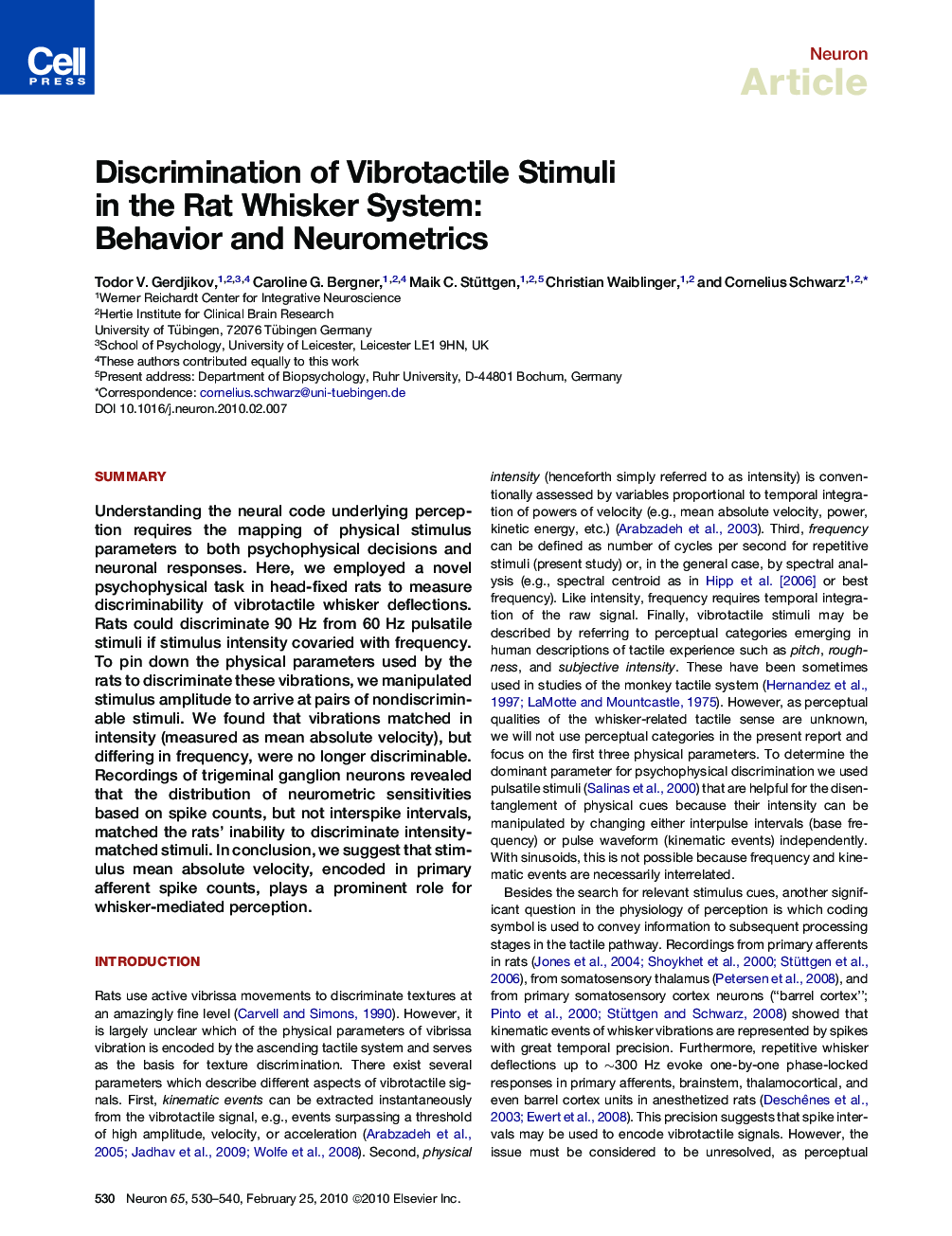| Article ID | Journal | Published Year | Pages | File Type |
|---|---|---|---|---|
| 4322654 | Neuron | 2010 | 11 Pages |
SummaryUnderstanding the neural code underlying perception requires the mapping of physical stimulus parameters to both psychophysical decisions and neuronal responses. Here, we employed a novel psychophysical task in head-fixed rats to measure discriminability of vibrotactile whisker deflections. Rats could discriminate 90 Hz from 60 Hz pulsatile stimuli if stimulus intensity covaried with frequency. To pin down the physical parameters used by the rats to discriminate these vibrations, we manipulated stimulus amplitude to arrive at pairs of nondiscriminable stimuli. We found that vibrations matched in intensity (measured as mean absolute velocity), but differing in frequency, were no longer discriminable. Recordings of trigeminal ganglion neurons revealed that the distribution of neurometric sensitivities based on spike counts, but not interspike intervals, matched the rats' inability to discriminate intensity-matched stimuli. In conclusion, we suggest that stimulus mean absolute velocity, encoded in primary afferent spike counts, plays a prominent role for whisker-mediated perception.
► Vibrotactile vibrissa stimuli are discriminated by rats using intensity cues ► The vibrissal system measures intensity as mean absolute velocity ► Spike counts rather than intervals are used as coding symbol in primary afferents
